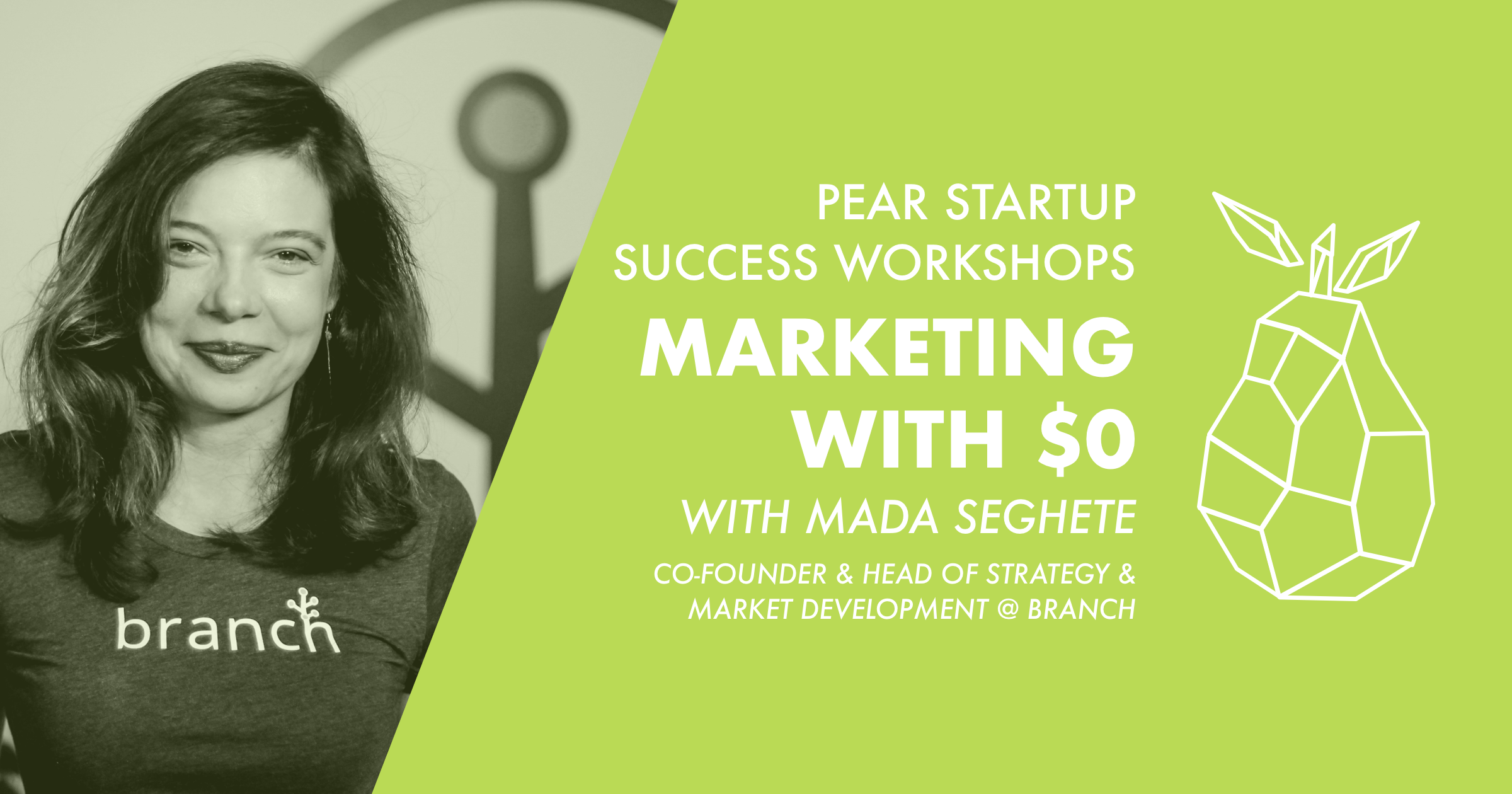
Mada Seghete, Co-Founder & Head of Strategy & Market Development at Branch hosted a talk on ‘Marketing With $0’ in April. This is just an excerpt! Watch Mada’s full talk for advice on viral, referral, community marketing, and more at pear.vc/speakers.
Many founders, when thinking about “doing marketing,” will immediately jump to thinking about Facebook or Google ads. Yet, organic acquisition methods such as viral, referral, or SEO are often much more effective and, even better, cost you $0.
Mada Seghete, who leads strategy and marketing at Branch, has run hundreds and hundreds of marketing experiments. Branch’s data has shown that ads are in fact, the least effective channels when compared to the more organic channels.
“It’s harder to do these things, because you don’t get the instant gratification of buying the user that is now on your website or your app, but the effort does pay off, because these people are more likely to convert and they’re more likely to stay with you for longer,” says Mada.
Mada Seghete, Co-Founder & Head of Strategy & Market Development at Branch
One of Mada’s favorite organic channels? SEO. She firmly believes that a good content driven SEO strategy can work for any kind of business. But it’s crucial to be scientific, so you don’t waste time producing content that won’t drive results.
Luckily for us, Mada was generous with sharing the scientific method her team developed at Branch.
Gathering keywords Deciding on keywords to rank for Producing content On SEO “Hacks”
(1) Gather data on all the potential keywords you could be targeting.
Your first step is to compile a list of potential keywords for your company.
A good place to start is with the queries that are already leading customers to your website. You can see where your search traffic is coming from and what keywords you are currently ranked for via Google Trends.
The second place to look is your competitors’ keywords. To research this, you can use tools such as Moz or SEMrush.
From there, you can then brainstorm some keywords on your own.
For all the keywords you add to the list, you’ll want to track the search volume, keyword difficulty, and average cost per click. You can find this information using tools like Google Keyword Planner, Moz or SEMrush as well.
[To see samples of Mada’s keyword research at Branch, watch the full talk at pear.vc/speakers.]
(2) Decide which keywords you would like to rank in search results for.
Once you’ve mapped out the universe of potential keywords for your company, you’ll need to determine which words you want to work on ranking for.
At Branch, the team narrowed down their list to the top 200 keywords with the highest search volume. They then checked Branch’s current ranking for those words.
Finally, they grouped these keywords into different themes and came up with their own formula to “score” and prioritize which themes of keywords they would pursue with content.
Branch’s formula looked like this: {{Relevance score*40%}+{competitor urgency*25%}+{keyword difficulty*20%}+{avg rank*15%}}/{count of keywords}
Running through a structured decision process like this allowed the team to uncover and write about topics they might not have considered previously.
“We would’ve probably never written an article about ASA files — an app association file — but we wrote something about that because it came out in our keywords. We explained how Branch could help with that, and it drove a lot of traffic to us.”
In sum:

(3) Produce the content!
With a prioritized list of topics, it’s time to write.
Instead of spending money hiring a writing team, the Branch marketing team instead invited anyone in the company to write on any of the topics on the priority list. Those who wrote received a free t-shirt that said “Branch Writer.” Many team members from customer success and sales ended up writing great articles.
What About All Those SEO “Hacks”?
Now, you might be wondering about all those little algorithm hacks that you’ve heard about.
While Mada has discovered some tips and tricks from her experimentation (for example, how to strategically run paid ads to boost your SEO faster — details in the full talk), it’s important to realize that a good SEO strategy is fundamentally a long-term strategy.
It will take about 2–3 months for your content to rank (Mada tested this personally by translating all Branch’s content into different languages and measuring how long it took to get organic traffic on these pages). But if you do it right, the results are evergreen.
Hacks may work in the short term, but they won’t get you the long-term results you actually want.
Mada recalls a story:
“I remember Google changed their ranking, and I was sitting in a marketing leader group, and everyone was like, ‘Oh my god, I just had a drop of 20% of our organic traffic. What happened?’ And I was like, shit, what happened?”
Mada was in for her own surprise.
“Then I looked at our traffic, and our traffic had gone up, because the way we’ve done SEO is not by gimmicks and trying little things. We just rolled with content and if you write with content, Google won’t penalize you for that.”